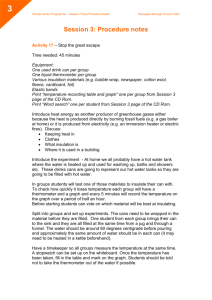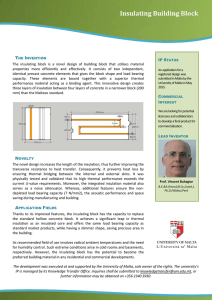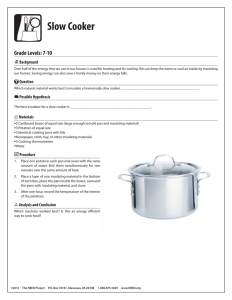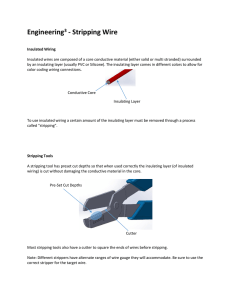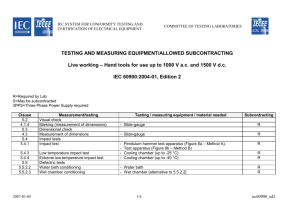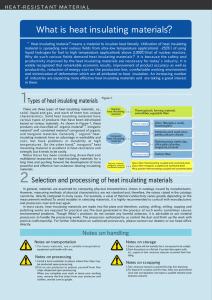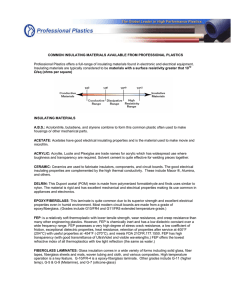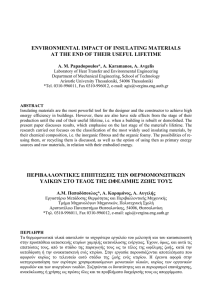Care and Use of Insulated Hand Tools
advertisement
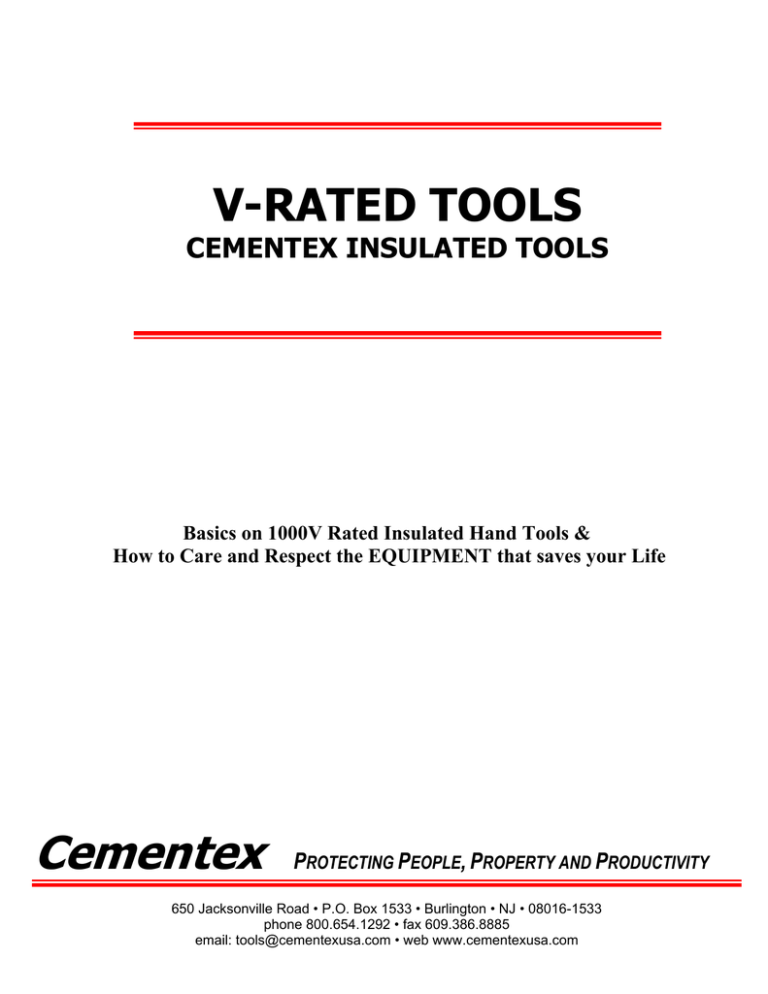
V-RATED TOOLS CEMENTEX INSULATED TOOLS Basics on 1000V Rated Insulated Hand Tools & How to Care and Respect the EQUIPMENT that saves your Life Cementex PROTECTING PEOPLE, PROPERTY AND PRODUCTIVITY 650 Jacksonville Road • P.O. Box 1533 • Burlington • NJ • 08016-1533 phone 800.654.1292 • fax 609.386.8885 email: tools@cementexusa.com • web www.cementexusa.com X4. RECOMMENDATION FOR USE AND IN-SERVICE CARE* X4.1 This appendix is for guidance only for the maintenance, inspection, retest, and use of hand tools after purchase. X4.1.1 Storage—Hand tools should be stored properly to minimize risk of damage to the insulation. Care should be taken that they are not stored in proximity to sources of heat such as steam pipes. Additionally storage of tools should allow for them to be in an open area yet climate controlled if such could occur to prevent corrosion of the exposed metal areas. X4.1.2 Inspection Before Use—Before use, each hand tool should be inspected visually by the user. If there is any doubt concerning the safety of the tool it should either be scrapped or subject to examination by a competent person and retested if necessary. This is almost as important as checking tires on your car before a road trip. The little extra effort that is put forth to save you from a shock or potentially an arc flash is worth only that in which you invest in your only personal safety with each and every tool you use. X4.1.3 Temperature—According to their compatibility, tools should be used only in areas having ambient temperature between –20 and +70°C and, for tools marked “C”, between –40 and +70°C. Cementex insulated tools have been proven when tested within the extreme cold and warmest temperature within the standard for work in all conditions. X4.1.4 Periodic Examination and Electrical Retesting—An annual visual examination by a suitably trained person is recommended to determine the suitability of the tool for further service. If an electrical retest is required by national regulation or by customer specifications or in case of doubt after visual examination, the routine test shall apply. Hand Tools should be cleaned to prevent flashovers or any creation of a conductive surface which could lead to a potentially unsafe situation. The cleaning should be done warm tap water and a mild detergent soap. Which offers a residue free surface for the tools after cleaning. Dielectric retesting is service that is offer mostly by request for tools that may seem to be questionable after a thorough inspection, which yields doubt about a tool or tools. The dielectric retest will prove with a pass / fail test the safety of the tools. 4. Performance Requirements 4.1 Insulated and insulating tools shall be designed and manufactured in such a way that they do not constitute a danger for the user or the installation if they are used properly. 4.2 The mechanical specifications for insulated and insulating hand tools having the same function shall comply with the corresponding ANSI or ISO standards. The mechanical performance of the working parts shall be maintained even after the application of any insulating layer(s). The insulation material shall be such that it will adequately withstand the electrical, mechanical, and thermal stresses to which it may be exposed during normal use. Insulating hand tools specially designed for live working in an environment of live parts at different potentials (boxes with electrical equipment, live working on underground cables, etc.), that generally are used to hold or move live conductors or to cut wires of small section, must have adequate mechanical properties to avoid the risk of breaking and the possible corresponding electrical consequences. These tools shall be checked for compliance with 7.8. Type Test 4.3 All insulating material shall be flame resistant in accordance with 7.7. Type Test 4.4 The insulating coating may consist of one or more layers. If two or more layers are utilized, contrasting colors shall be employed. 4.5 The design and construction of the handles shall provide a secure handhold and prevent unintentional slipping. 4.6 The tool shall have an operating temperature range from – 20 to + 70°C. 4.7 The insulating material shall adhere securely to the conductive parts of the tool and any outer layer of the material over the temperature range from – 20 to + 70°C. 4.8 Tools intended for use at extremely low temperatures (–40°C) shall be designated “Category C” and shall be designed for this purpose. 4.9 Double-ended tools such as box wrenches, keys for hexagonal socket screws, double ended socket wrenches, double-head openend wrenches, etc., are not allowed for insulated tools but are allowed for insulating tools. 4.10 Tools capable of being assembled shall have retaining devices to avoid unintentional separation of the assembly. 4.11 In the case of connecting parts of tools capable of being assembled, the insulation shall be applied in such a manner that if any part becomes detached during use, no conductive part, which may still be live, can be touched inadvertently or cause a flashover. 4.12 Tools capable of being assembled and designed to be interchangeable between different manufacturers shall be specifically categorized and marked as such. * Informational excerpts from ASTM F1505-01 Specification Standard Cementex Products, Inc. • 800.654.1292 • tools@CementexUSA.com • www.CementexuUSA.com • page 2
